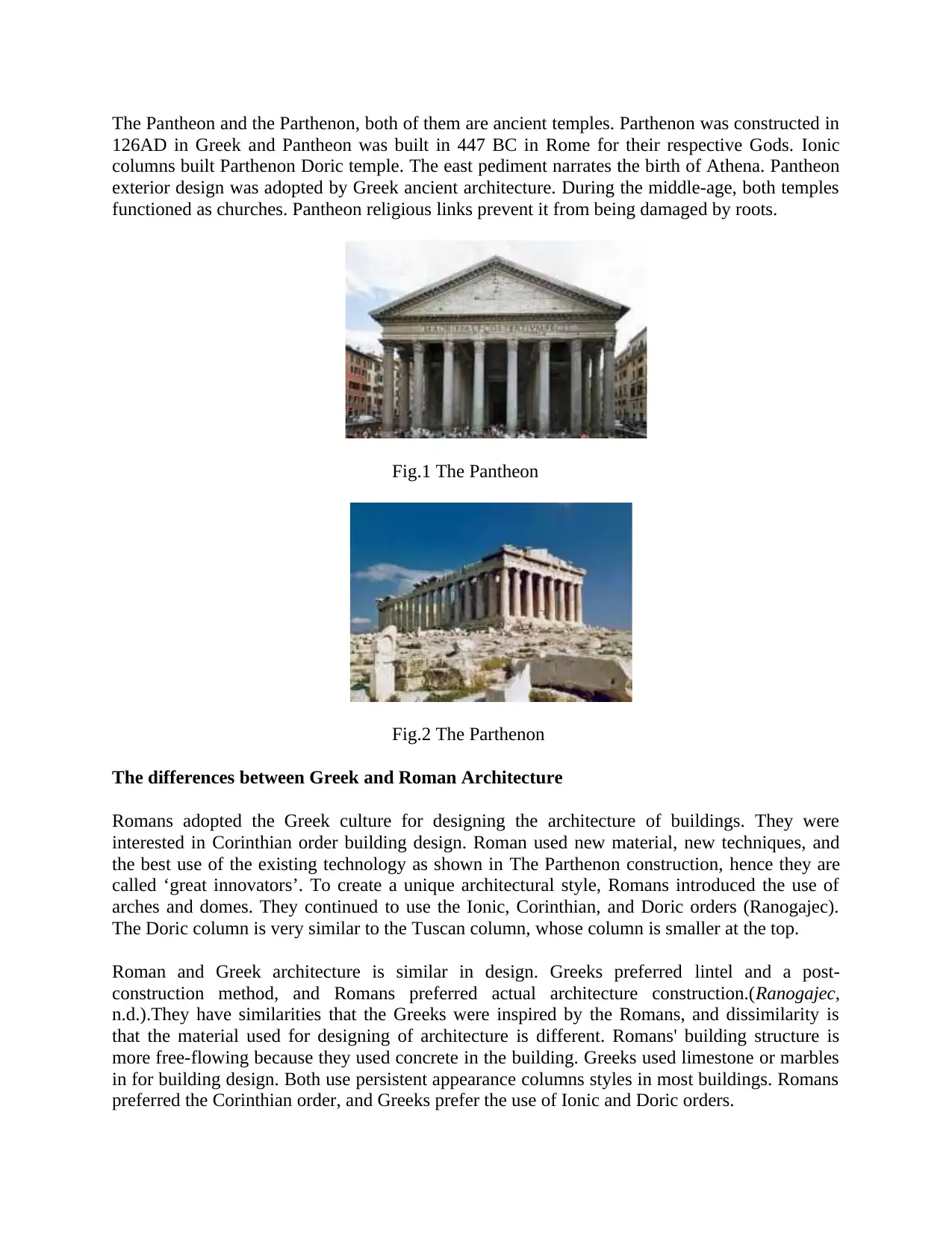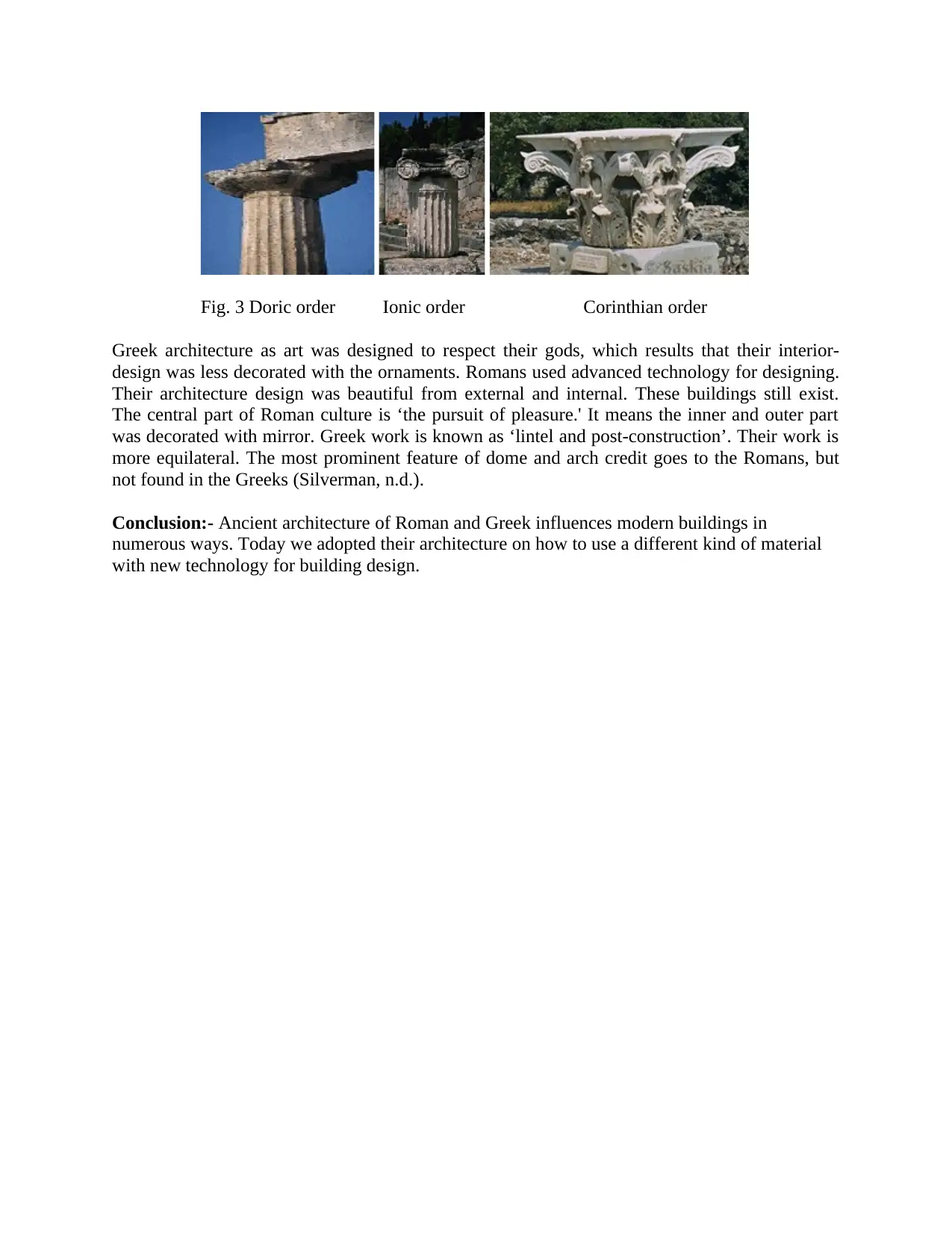Pantheon and Parthenon: Tracing the Evolution of Architecture
VerifiedAdded on 2022/08/14
|4
|496
|17
Essay
AI Summary
This essay provides a comparative analysis of the Pantheon in Rome and the Parthenon in Greece, highlighting the architectural distinctions between Roman and Greek designs. The Parthenon, constructed in 447 BC, showcases Doric temple features and narrates the birth of Athena, while the Pantheon, built in 126 AD, reflects Greek architectural influences and served as a church during the Middle Ages. The essay emphasizes that Romans, inspired by Greek culture, innovated by using new materials like concrete and techniques such as arches and domes, while Greeks favored limestone and post-and-lintel construction. Despite similarities in column styles, Romans leaned towards Corinthian order, and Greeks preferred Ionic and Doric orders. The study concludes that both ancient architectural styles significantly influence modern buildings, particularly in material usage and technology integration. The document is available on Desklib, a platform offering study tools and solved assignments for students.
1 out of 4










![[object Object]](/_next/static/media/star-bottom.7253800d.svg)